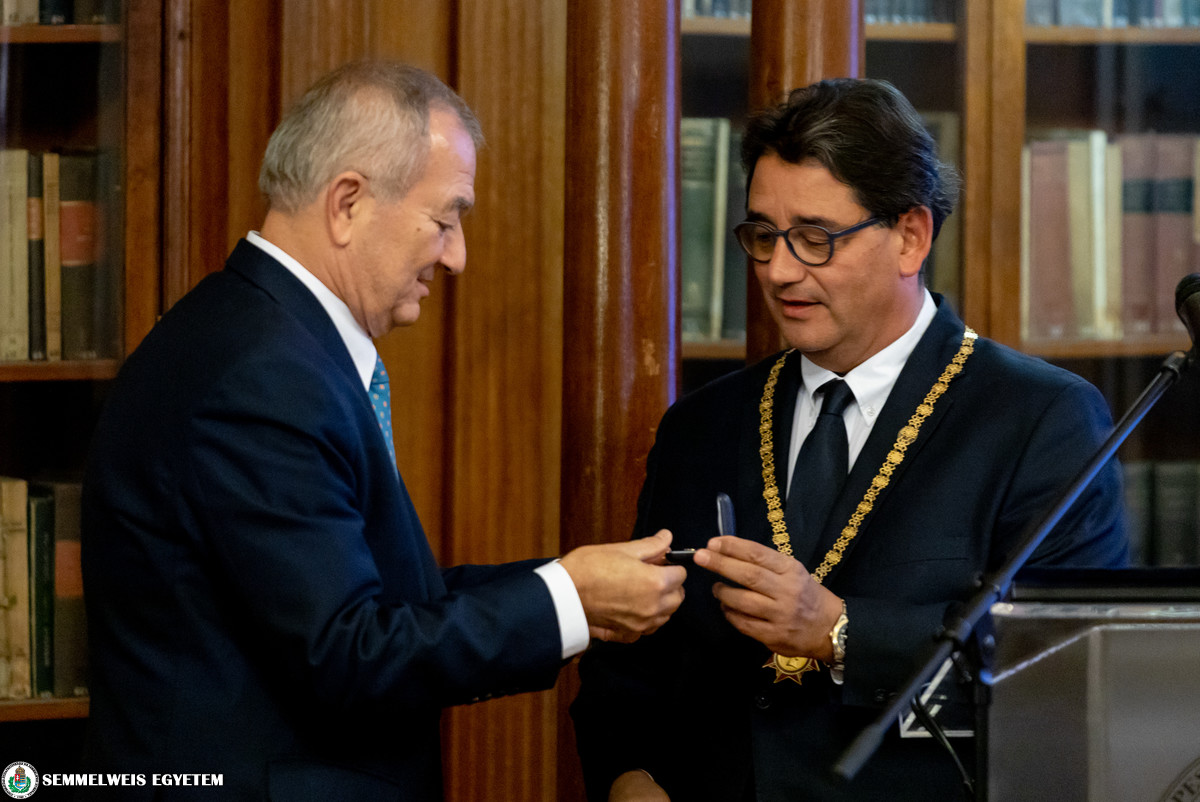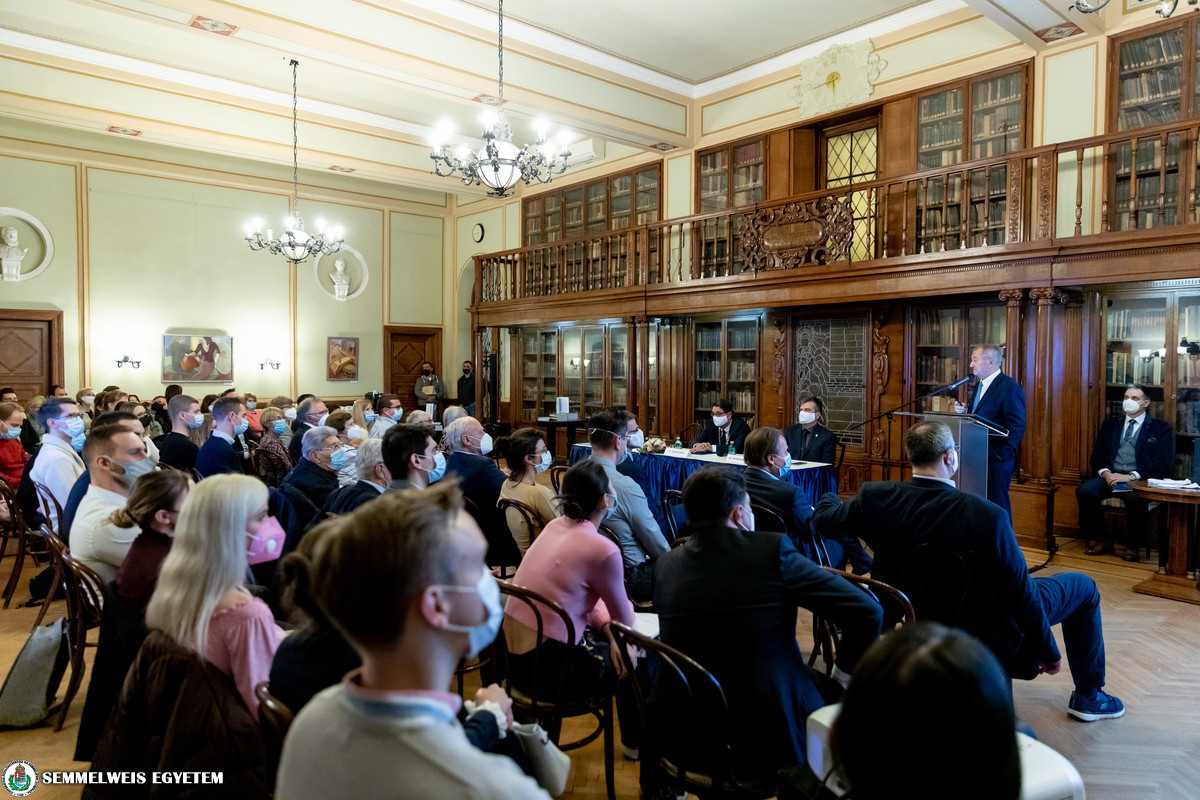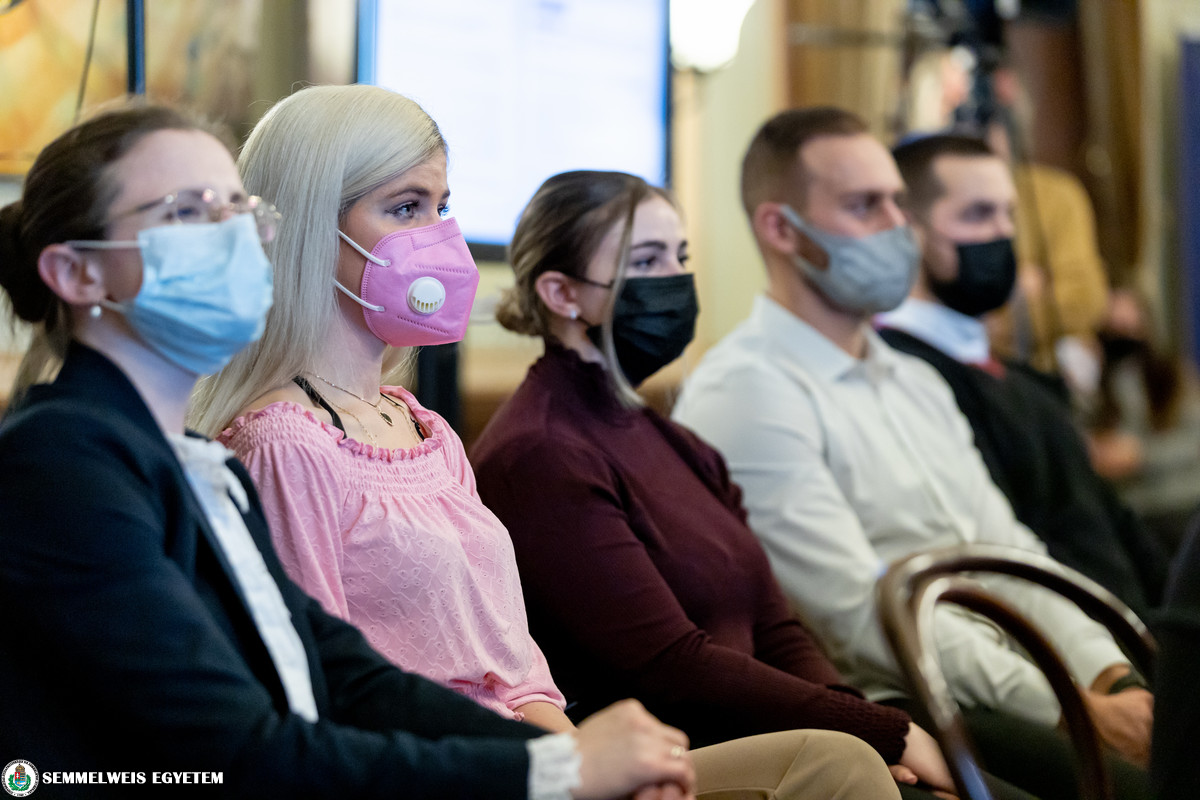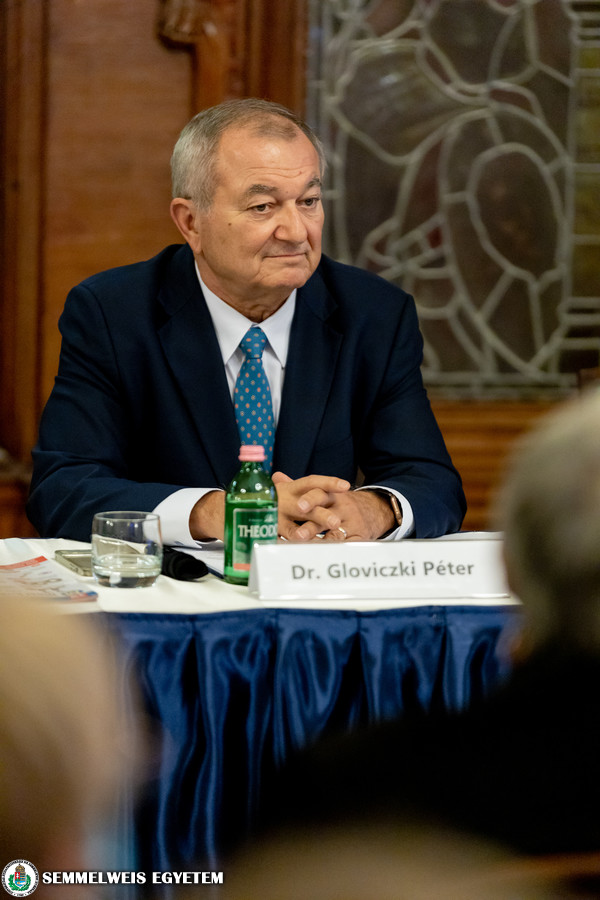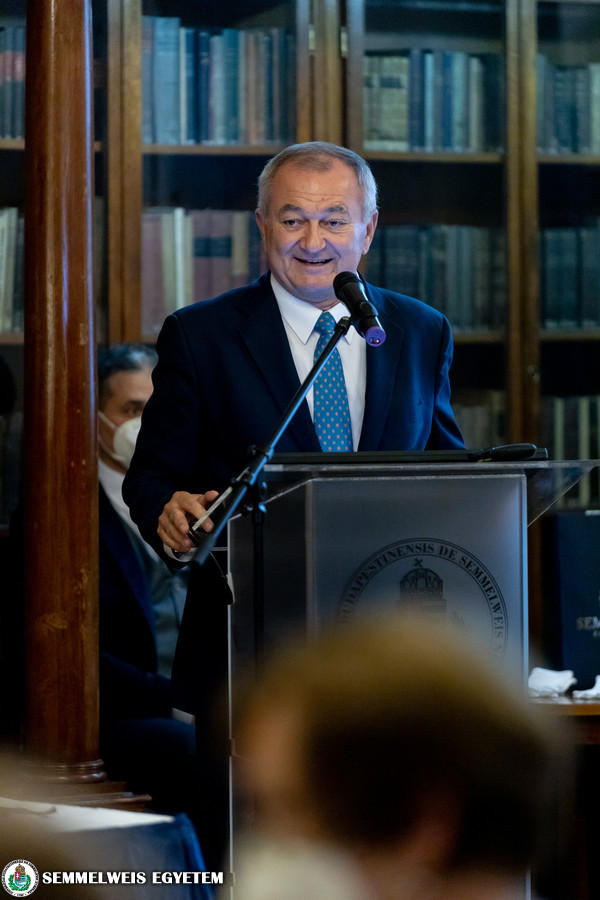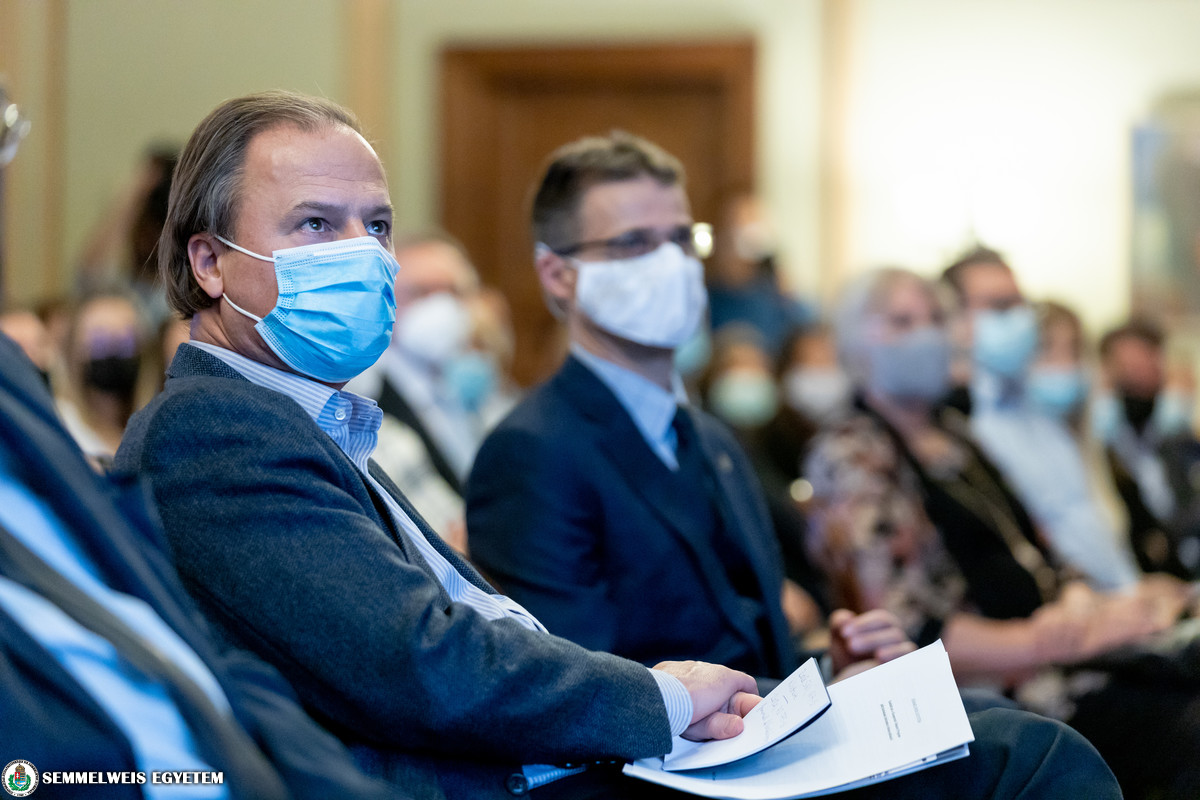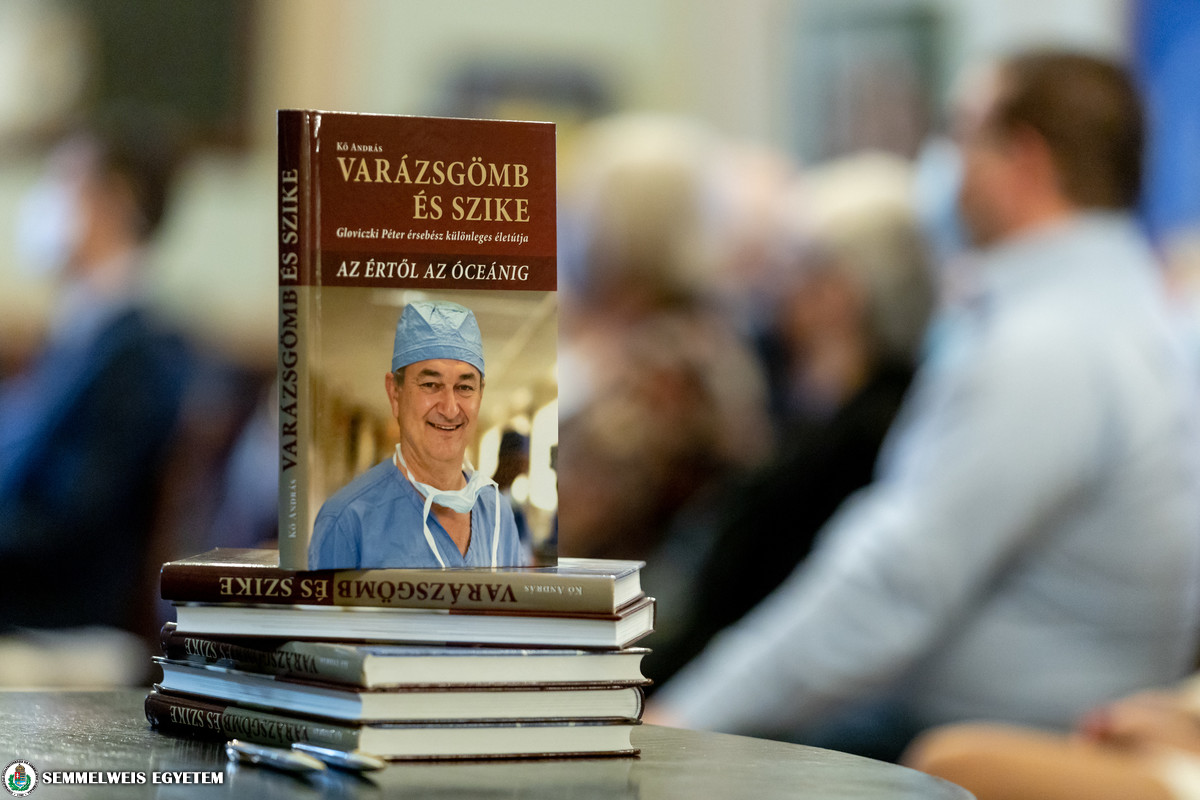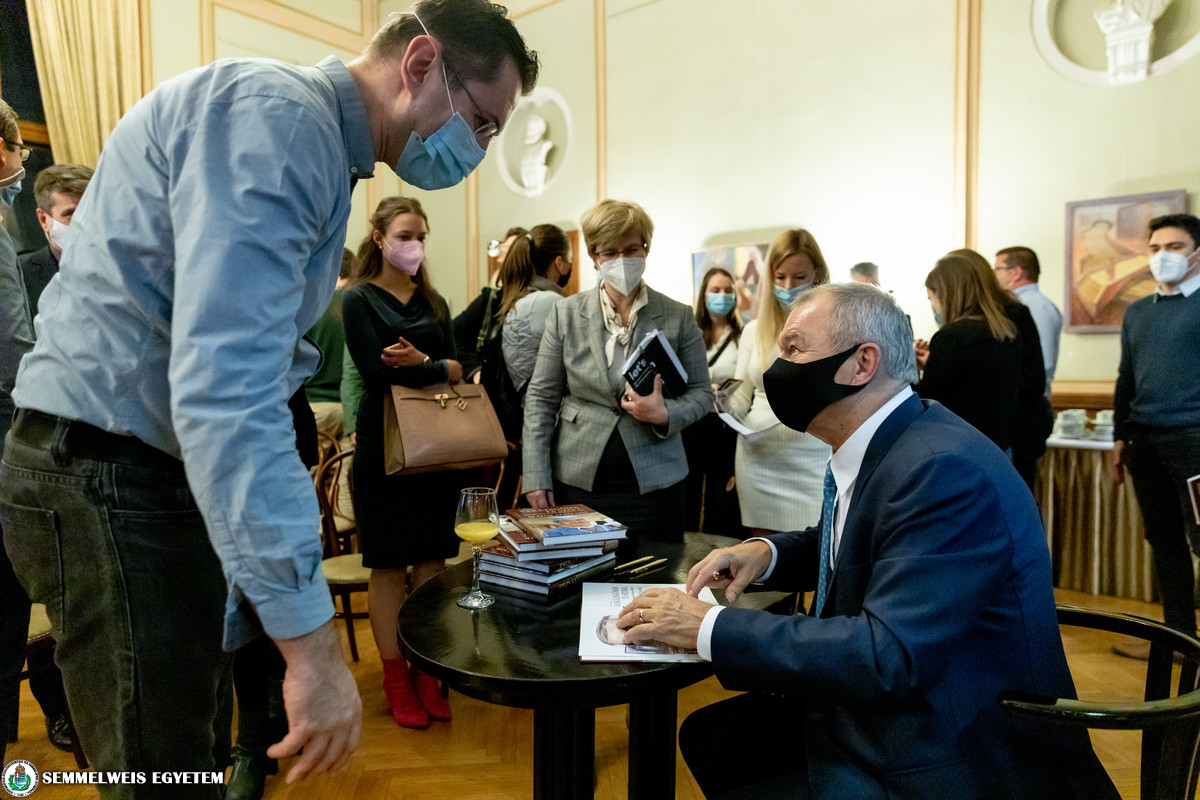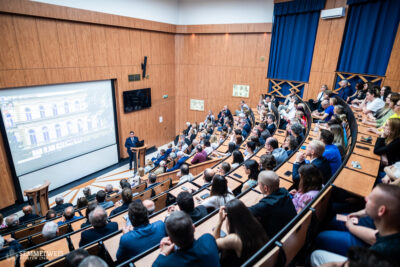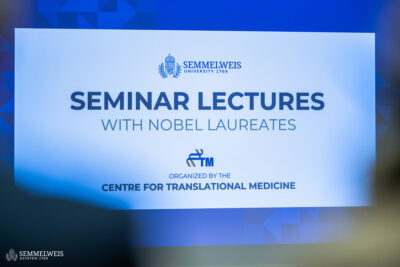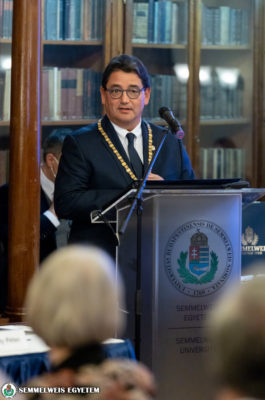 In his welcome speech, Rector Dr. Béla Merkely presented the scientific career and achiecvements of Dr. Péter Gloviczki. He emphasized that besides being an honorary doctor of Semmelweis University and a Semmelweis Budapest Award winner, he is the most successful Hungarian-born surgeon, who worked for decades at the Division of Vascular Surgery at the Mayo Clinic in the United States and is currently the editor-in-chief of the Journal of Vascular Surgery. In addition to his many scientific publications, the rector highlighted that during his career Dr. Gloviczki has mentored 85 vascular surgeons and 25 researchers, which shows his achievement in building a true vascular surgery workshop around him.
In his welcome speech, Rector Dr. Béla Merkely presented the scientific career and achiecvements of Dr. Péter Gloviczki. He emphasized that besides being an honorary doctor of Semmelweis University and a Semmelweis Budapest Award winner, he is the most successful Hungarian-born surgeon, who worked for decades at the Division of Vascular Surgery at the Mayo Clinic in the United States and is currently the editor-in-chief of the Journal of Vascular Surgery. In addition to his many scientific publications, the rector highlighted that during his career Dr. Gloviczki has mentored 85 vascular surgeons and 25 researchers, which shows his achievement in building a true vascular surgery workshop around him.
It is a great honor for us to have our guests and studens hear first-hand from him how to write a great paper and publish it in a high-impact journal,
said Dr Béla Merkely.
He thanked Dr. Péter Ferdinandy, Vice-Rector for Science and Innovation, for the initiative that has led to the transformation of the previous Research Salon program series into the Science and Business Salon, of which the current event is already a part of.
The series has been reclassified as a new elective course: TDK and PhD students who attend at least 8 lectures will receive a total of 1 credit point, while medical specialists and pharmacists will receive 4 professional training credits per session.
Dr. Béla Merkely pointed out that Dr. Péter Ferdinandy was again on the list of the most cited researchers in the world this year. He reminded that the university has an ambitious goal to be among the top 100 higher education institutions in the world: “We have made good progress in the last 3 years, we are halfway there and now we are in the top 1%, having moved up to 277th place, but the second half of the journey will certainly be more difficult,” the rector stressed.
He also welcomed the international students present, pointing out that the event is an excellent platform for knowledge transfer, networking and even for future international cooperation. Finally, he thanked Dr. Peter Gloviczki for his support to the university and presented him with a newly designed gold pin for the Semmelweis Budapest Award, which symbolizes the connection of the award winners to Semmelweis University.
It is a great thing to make scientific discoveries, but it is even greater to be willing to share these discoveries and to encourage others,
began Dr. Péter Gloviczki, quoting William Mayo, one of the founders of the world-famous Mayo Clinic. He then drew on his career and his experience as editor-in-chief of the Journal of Vascular Surgery for the past 5 years to give the audience advice on how to write a great scientific paper and get it published in a high-impact journal. He explained that the basis for this above all is having a good quality research based on solid, reliable data, backed up by a high level of evidence. Next, when writing a paper, the most important thing is that it is written in clear and simple language, with a logical structure, divided into sections with clear headings. It is important to be impartial, accurate and objective in the wording, to use appropriate statistics, but also to indicate the limitations of the research and to base the conclusions on the evidence presented in the paper.
 He also pointed out why it is important to publish in a high-impact journal: these are the most widely read and cited publications, the most trusted sources of scientific information, while open access ensures that the results of the research reach the widest audience. In addition, these articles undergo rigorous peer review and journals have plagiarism detection software. “Overall, high impact publications offer international recognition to researchers, their institutions and universities,” he said.
He also pointed out why it is important to publish in a high-impact journal: these are the most widely read and cited publications, the most trusted sources of scientific information, while open access ensures that the results of the research reach the widest audience. In addition, these articles undergo rigorous peer review and journals have plagiarism detection software. “Overall, high impact publications offer international recognition to researchers, their institutions and universities,” he said.
Using Semmelweis University as an example, he showed how the increased number of publications in high-impact journals and higher citation rates have contributed to the university’s rise in international rankings in recent years. He pointed out that the Times Higher Education (THE) methodology gives citations a weighting of 35%. He also shared some good advice for researchers on how to get their article published in a high impact publication. These include publishing with a team of authors and great mentors, conducting a multidisciplinary study, writing the article along established guidelines (e.g. CARE, STROBE, PRISMA), and using national databases and clinical registries for research. It is also important to have a catchy, well-written title with appropriate keywords, and to read and be aware of the instructions for authors in the publication and follow them fully, Dr. Péter Gloviczki noted.
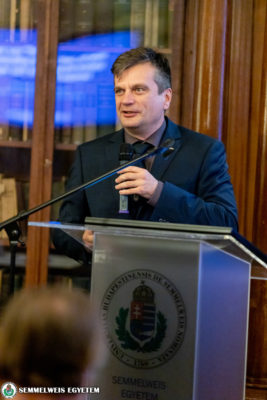 In his presentation, Dr. Péter Ferdinandy, Vice-Rector for Science and Innovation pointed out how important citations are for the global ranking of Semmelweis University. “It is not enough to publish excellent results, we also have to increase the citations of our papers,” he said. To maximize the scientific impact of an original paper, experts need to publish follow-up pieces and reviews in their field consistently. Choosing the right title including relevant keywords are extremely important, too. The more buzzwords it features, the more probable it is going to be a highly ranked search result and thus, a more popular scientific finding, stressed the vice-rector.
In his presentation, Dr. Péter Ferdinandy, Vice-Rector for Science and Innovation pointed out how important citations are for the global ranking of Semmelweis University. “It is not enough to publish excellent results, we also have to increase the citations of our papers,” he said. To maximize the scientific impact of an original paper, experts need to publish follow-up pieces and reviews in their field consistently. Choosing the right title including relevant keywords are extremely important, too. The more buzzwords it features, the more probable it is going to be a highly ranked search result and thus, a more popular scientific finding, stressed the vice-rector.
Building a research network may also benefit the cause: nurturing professional relations in the right circles or keeping in touch with editors and reviewers at scientific journals usually mean a better chance to get published, according to Dr. Ferdinandy. However, one is should choose only the best periodicals for publication. This is indicated by journal rankings Q1 and Q2 (meaning it is among the top journals in the given area), and also indexed in major databases like PubMed or Scopus. Increasing citations, open access is simply a must, added the vice-rector, suggesting the gold open access model to be an optimal solution (making the article permanently available online, and to be shared anywhere).
After a paper is published, experts should upload their work to research platforms (like ResearchGate or Google Scholar), deposit it in a repository and also advertise it. Conferences are excellent opportunities to spread the word, not to mention social media and direct contacts, said Dr. Ferdinandy. Further information on how to publish and advertise a scholarly article can be found here: https://lib.semmelweis.hu/publikacios_utmutato.
At the end of the event, participants also had the opportunity to get Dr. Péter Gloviczki to sign copies his recently published biography, entitled “Crystal Ball and Scalpel,” written by András Kő.
Tamás Deme, Viktória Kiss
Photo: Attila Kovács – Semmelweis University
